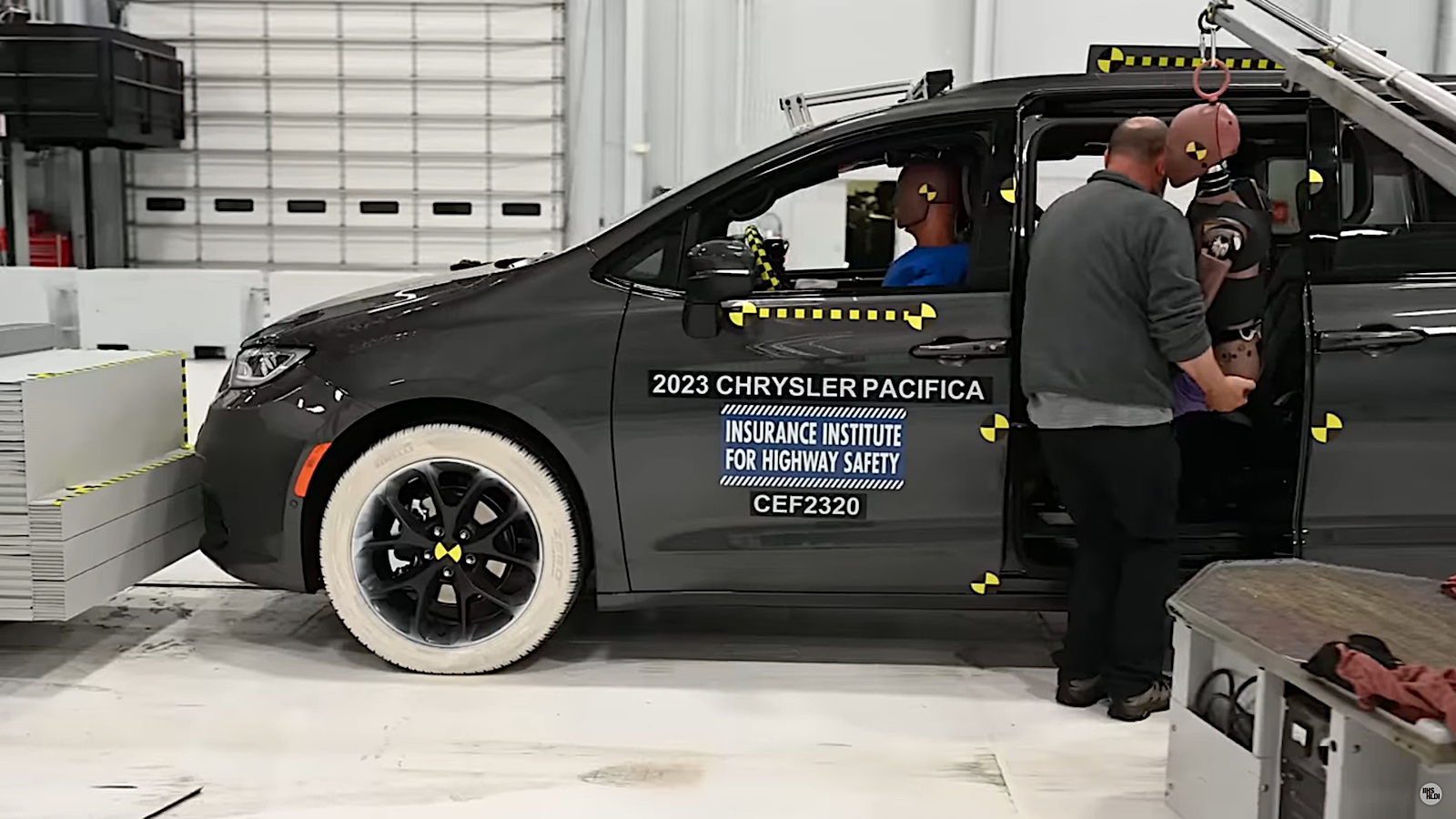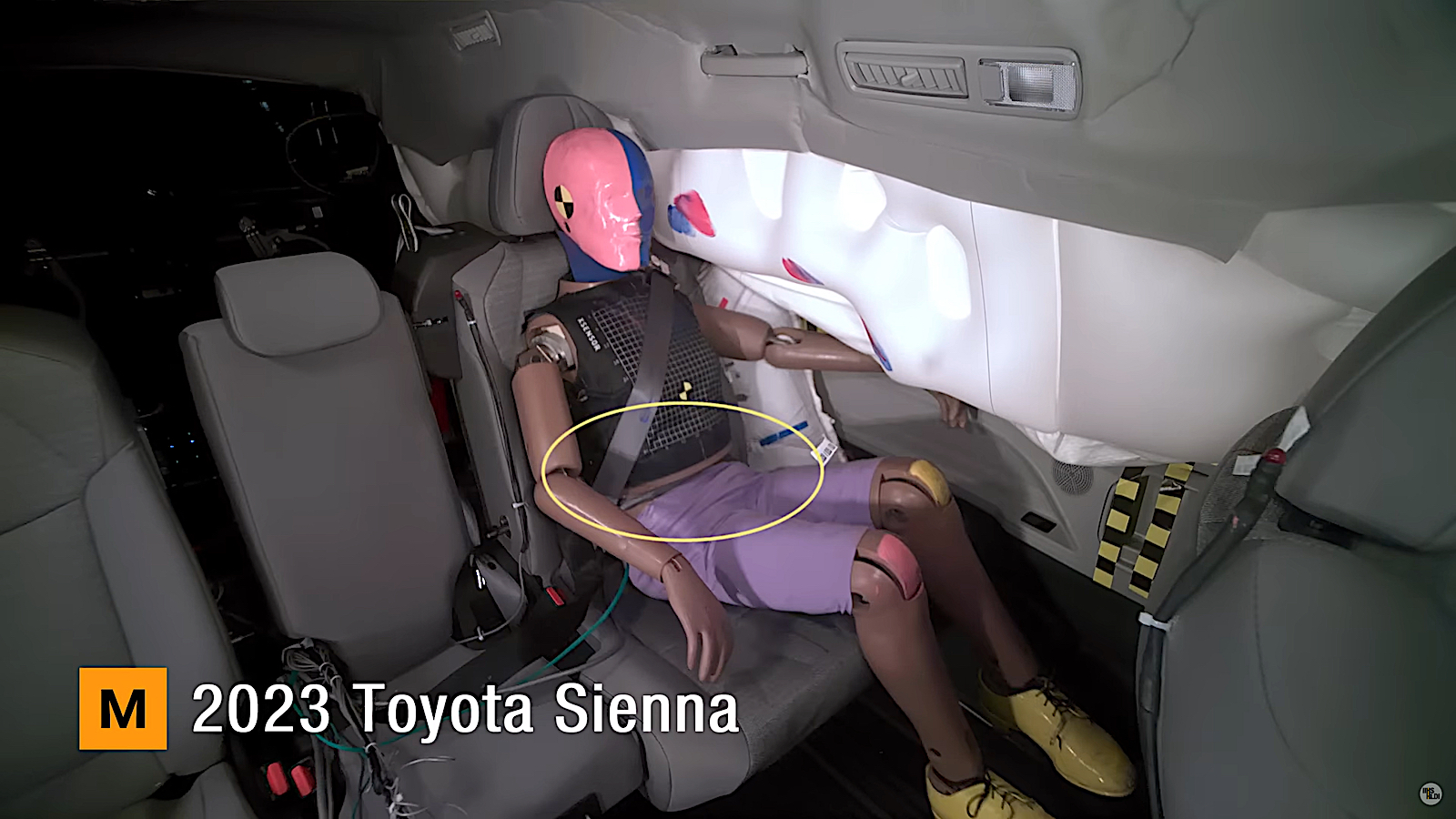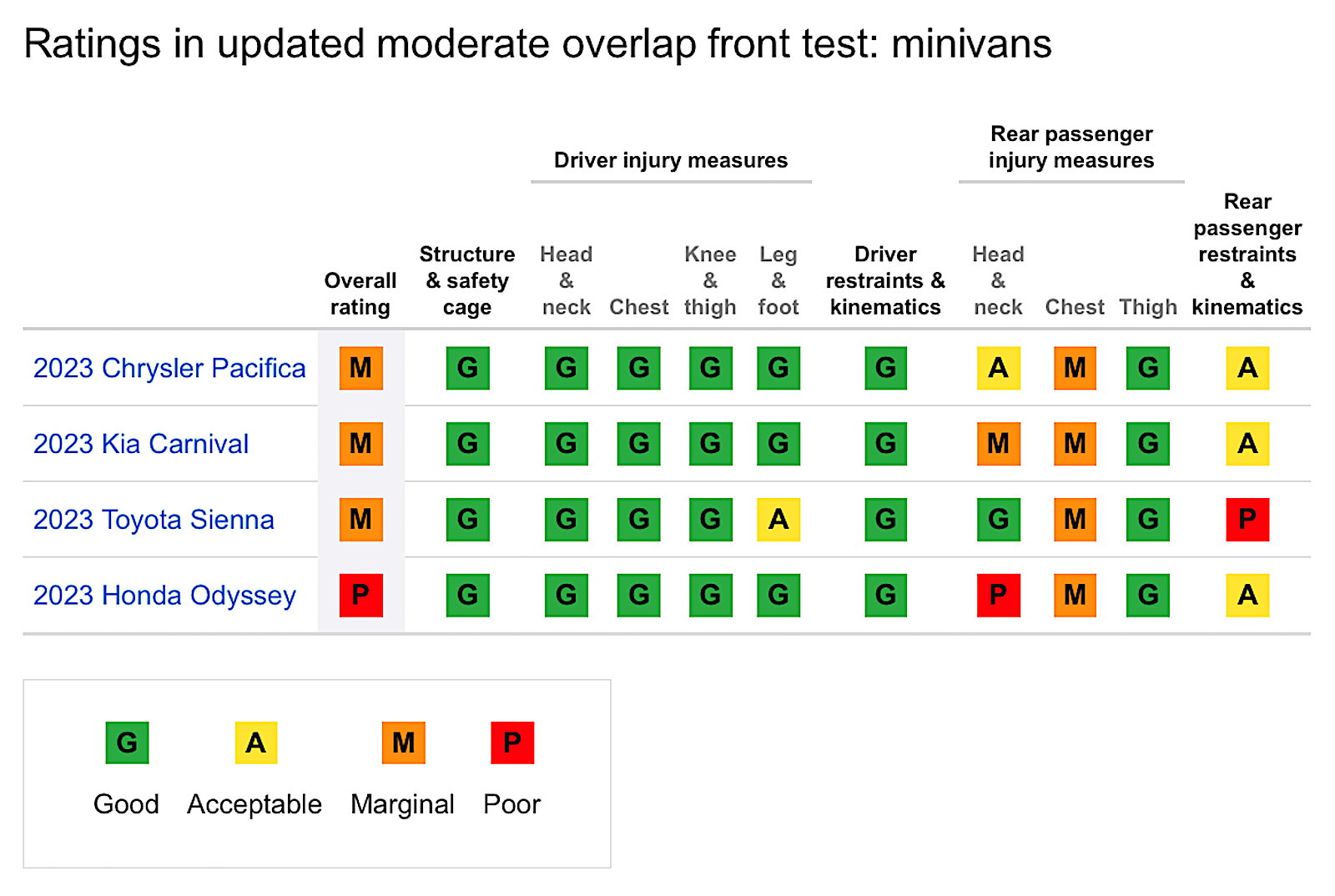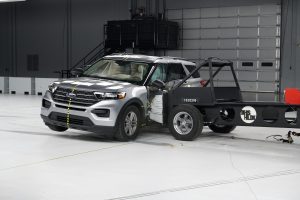While they’re no longer nearly as popular as they were two decades ago, minivans remain the option of choice for millions of Americans. And beyond their convenience and roominess, studies show they’re considered one of the safest choices for “soccer moms” and other family buyers.
But are they really?
A recent series of crash tests by the Insurance Institute for Highway Safety raises some serious concerns, with not one of four popular people-movers getting a good, or even acceptable rating.

Minivans are typically considered among the safer vehicles on the road, but new IIHS testing suggests otherwise.
Weakest where kids are likely to sit
The problem is that the four minivans – the Chrysler Pacifica, Honda Odyssey, Kia Carnival and Toyota Sienna — fell well short of expectations where kids are most likely to sit: the rear seats.
“Back seat safety is important for all vehicles, but it’s especially vital for those, like minivans, that customers are choosing specifically to transport their families,” said IIHS President David Harkey. “It’s disappointing that automakers haven’t acted faster to apply the best available technology to the second row in this vehicle class.”
The tests
The IIHS runs a broad range of tests on new vehicles, including moderate overlap front crashes. That test is designed to reflect one the most common incidents that motorists might experience — where a vehicle slams into oncoming traffic, or objects like telephone poles — at an offset angle.
But the trade group has gone beyond just putting crash dummies in just the front seats. That’s because studies revealed the risk of fatal injuries is actually worst for occupants in the second row, even if they’re also belted up.
To see how the four minivans fared, the trade group used an adult male dummy in the driver’s seat. But it also placed dummies the size of a 12-year-old child, or a petite woman, in the second row behind the driver. All “occupants” were properly belted up.
The results
When the minivans were put through the moderate overlap front crashes the results weren’t pretty. Among other things, the rear seat dummies showed evidence of “submarining,” where they slid down during the crash and under their belts, a situation that can cause severe abdominal injuries. The alternative occurred in some instances when the dummies’ heads made contact with the front row seats.
“The restraint systems in all four vehicles leave the second-row occupant vulnerable to chest injuries, either because of excessive belt forces or poor belt positioning,” said Jessica Jermakian, IIHS vice president of vehicle research. “That’s concerning because those injuries can be life threatening.”
Of the four minivans, the Chrysler Pacifica, Kia Carnival and Toyota Sienna were rated as marginal. The Honda Odyssey got a poor rating.
Missing safety technology
According to the IIHS, one of the reasons for the poor performance was the unexpected lack of the latest safety technology for passengers not sitting up front.
The Toyota Sienna was the only one of the four to come with a seatbelt pretensioner. It’s all too common for passengers — especially children — to not properly tighten up their belts. Pretensioners are designed to immediately tighten a belt when the vehicle’s sensors determine it’s in a crash. But, even then, the IIHS testers found the Sienna rear seatbelts tended to slide up towards the test dummy’s neck, allowing it to submarine.
The Sienna, incidentally, was the only one of the four minivans to offer a back-seat reminder, a system designed to remind the driver to check the rear seat — if it had previously been opened — to see if they might have left something behind. That could be a handbag, briefcase or shopping bag.
But experience shows that even good parents, racing to work or running errands, might inadvertently leave a child behind. Scores of children routinely die each year when they’re left in overheating vehicle interiors.







0 Comments